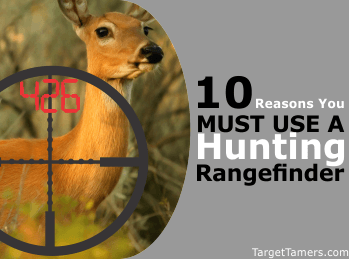
Laser rangefinder technology has undergone dramatic improvement as recently as within the past five years.
They're now faster than ever, more rugged in design, and even with advanced technology they're still as simple to use as can be.
These days, rangefinders are a standard tool that all good hunters are investing in. But, should you get in on the rangefinder fad too?
Why Use a Hunting Rangefinder?
1. Eliminate Guesswork
The fundamental feature of a rangefinder is to provide the distance between you and your target. At the push of a button a laser beam is sent out to bounce off the target and back to you. During this process, an internal clock in the unit is measuring the distance. Why is accurate distance important?
Other than not wanting to miss your target, every hunter with integrity wants to make a clean shot to prevent tracking of a wounded animal, let alone inflicting any unnecessary pain and suffering to the prey. If you don't want to miss, don't guess.
2. Get Closer
Last season you got too close and the snap of that twig gave you away. Sadly and speedily, off goes the herd in panic towards the horizon. Every hunter knows this scenario, and it could take several hours later to finally get another chance. With a rangefinder, you can get closer without physically moving in.
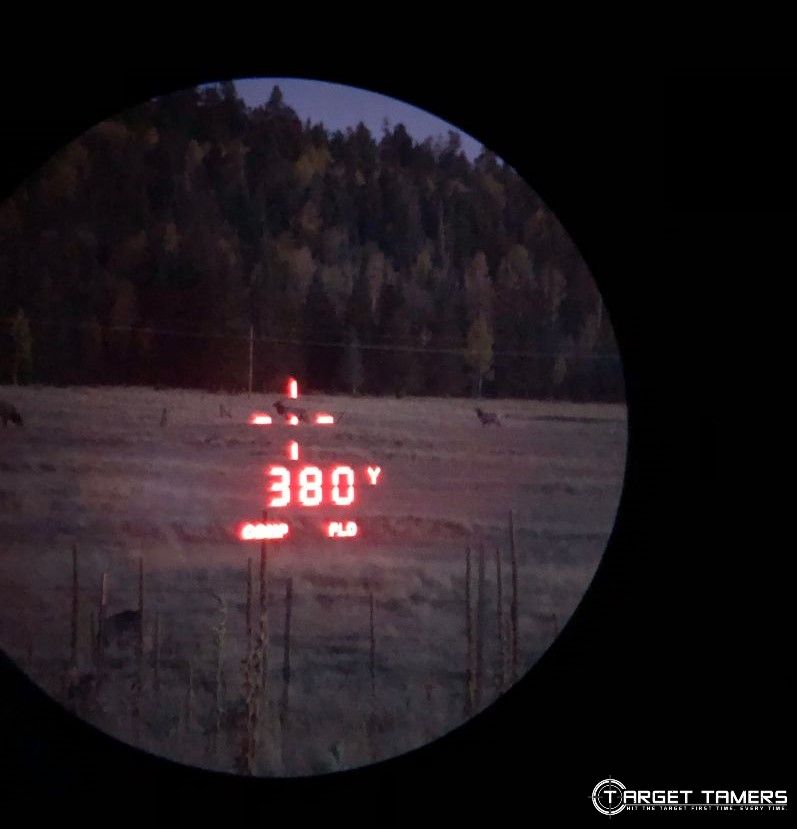
Bow hunting rangefinders like these tend to have a maximum range of around 800 yards, whereas rifle hunting rangefinders such as these can vary between 600 to 1300 yards. If you're a serious long distance marksman, there's no way you can go without a rangefinder again. You can get a unit that can range to a true one mile distance without the fear of spooking your prey.
3. Prep for the Hunt
So, you know a few hot spots that you may want to check out. Who's to say you can't do a little prep work before the big hunt? To save time, scout out the exact area you know your prey such as waterfowl will be. Mark that area with something like a decoy or look for specific landmarks.
If you're using a blind, range the distance from the blind and the decoy to get the distance. If you're planning your hunt by foot, then mark out a good spot you'll want to use and range for the distance here too. By ranging these spots before hand, you'll save yourself some stress, frustration, and time since you'll know exactly where to go in the dark at three in the morning and you'll have a better idea of where to aim.
You instantly improve your accuracy chances of success. By the way, you also gave yourself a chance to sight-in your scope. Your welcome.
4. Improve Your Estimating Skills
No matter how ideal it is to be able to have just the perfect amount of time to range your target, it doesn't always happen like this. Sometimes, that unexpected deer just sneaks up on you and you don't have time to pull out the rangefinder.
By practicing ranging before-hand or from frequent use, you'll be able to better instinctively estimate accurate distances for when that unexpected and lucky moment comes your way.
5. Steep Terrain a Non-issue
Whether you're mountain-goat hunting in a canyon or boar hunting on the slopes of the Appalachians, angle compensation features of a rangefinder will make hunting in these terrains non-issues. On a decline or incline, the target can not only look further away but it is further away than the actual distance you need to aim.
Trying to calculate the accurate shot angle and the right correction values to make sure gravity and drag don't ruin your flight path, can end up being a difficult math problem. Rangefinders will give you the true horizontal distance to the target so that you don't aim too high or too low and end up missing a shot or losing an arrow.
Adjust your scopes/sights to match the rangefinder reading and you've got yourself a bullseye. If you're a bow hunter, you'll also appreciate the angle you'll need to shoot from.
6. Avoid Shooting Something Else
Innovative rangefinder technology can now determine whether you'll hit your target or something else instead. Even if you accurately aimed for the right distance, have you ever snagged that tree branch or that rock that was in the way? Since many long range rangefinders provide the distance of the furthest target, you might not notice that limb that's in the way.
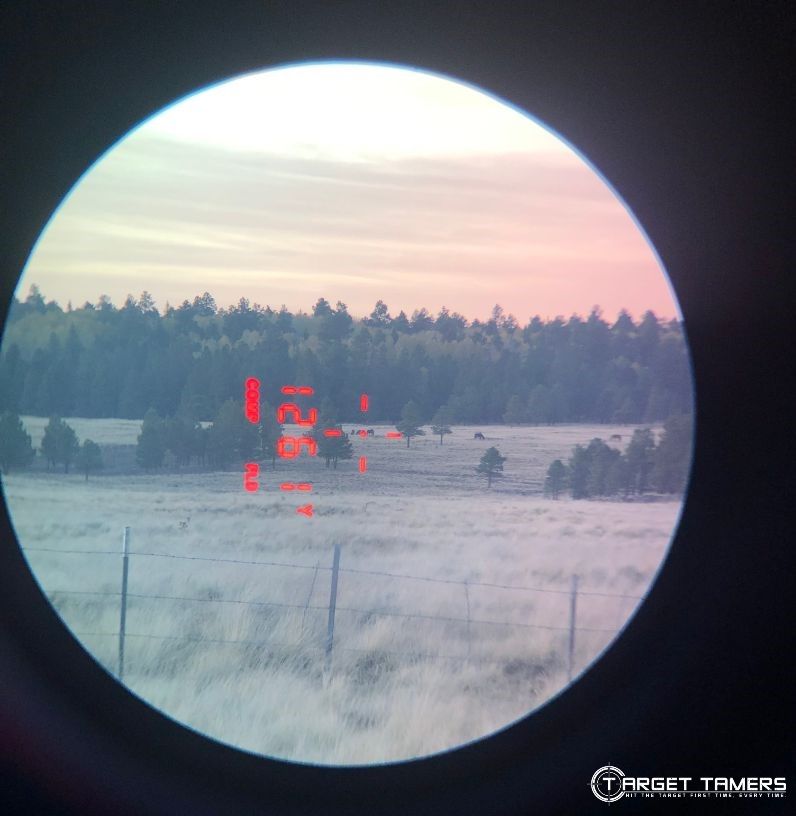
If you're an avid bow hunter, keep an eye out for features that display your shot clearance. These types of features can highlight the area from the center point of your true horizontal distance to the highest point the arrow will fly. This area will expose any limbs or other obstructions that may get in the way of you making your shot.
7. Convenient to Carry Around
Size matters. Tell that to the avid hunter that doesn't want to pack another piece of equipment that has to be toted around. As cell phones have become more intelligent and smaller over the past decade, so have rangefinders. Some are so small and compact that they can actually compete with the size of a smartphone. Some barely weigh half a pound.
With dimensions like these, there's no reason to not have a rangefinder on your person. It's vertical design means you can conveniently use it, pull it out, and put it away with one hand. If you're more of a two-handed person, then rangefinder binoculars could be worth the cost and the quality for you.
Practically all modern and conventional rangefinders can be carried on a lanyard around the neck, put in a case attached to your belt, or even just stowed away in the front pocket of your mossy oak coat.
8. Affordable
The costs of sports optics doesn't have to mean draining your bank account. Although there are some very luxurious and high-performance laser rangefinders in the market, there are also many budget-friendly units that can get it done. From as little as $100 for a unit, there's also a large variety to choose from under $250.
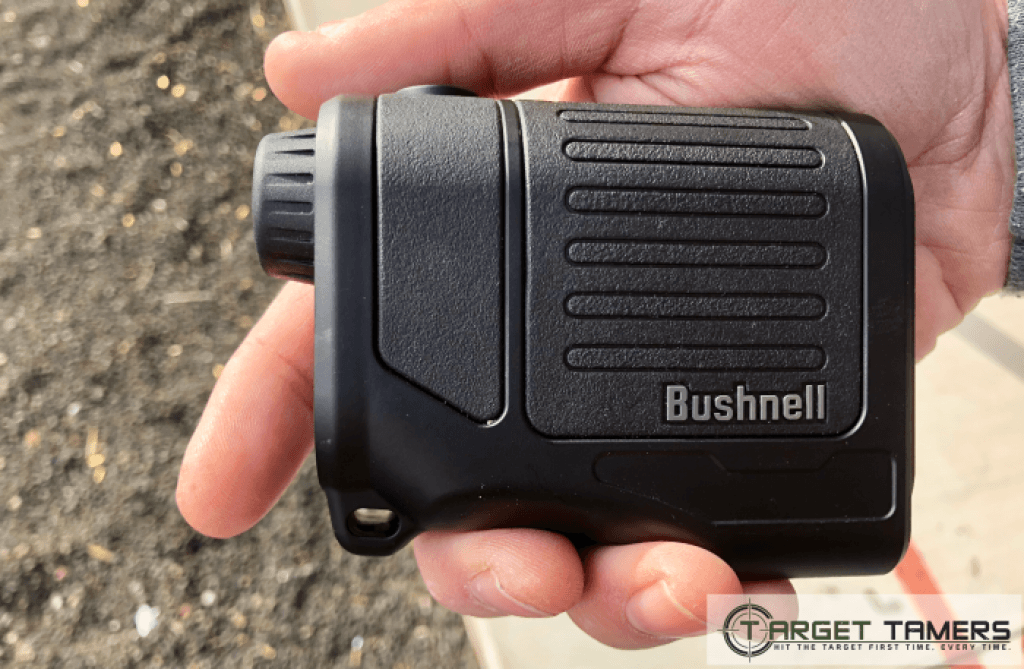
You can even go up in quality and performance paying no more than $450. If you're willing to dish out the cash, you can have pristine optics, perfect distance readings, and superb performance in the palm of your hand for $800.
9. Replace Binoculars
Some high-quality and high-performance monocular rangefinders are encroaching in on binocular territory and for good reason too. You're essentially getting two advantages for the price of one: magnification and distance, not to mention all the other benefits of owning a rangefinder.
Some higher-end rangefinders have a wider field of vision so you won't miss that partially obscured doe that you would've spotted with a pair of binos too. There's also the option of rangefinder binoculars that give you the best of both worlds.
You won't have to tug around two different units and your field of vision is back in the binocular realm where nothing will get by you.
10. Can Take Abuse
Just because there's tornado weather outside or it's significantly below freezing, it doesn't mean you have to postpone your hunt. Obviously this benefit depends on the quality rangefinder that you get.
Some come with nitrogen filled lenses that prevent fogging while waterproof capacity can extend up to five feet of water submersion. Rugged magnesium housing and aluminum casing can extend a rangefinder's life far beyond that of a fall from a tree stand or most forms of environmental and physical abuse.
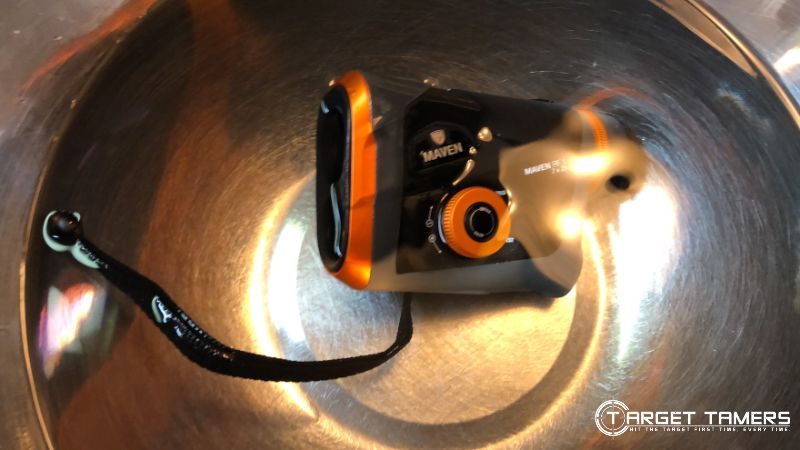
If you knew that there was a device that could save you time in the field, assure you a clean shot, and guarantee you your ham for Christmas dinner, wouldn't it be on the top of your wish list?
If you don't already own a laser rangefinder, then you're definitely missing out on a lot more than your aim on that last buck and perhaps you should check these rangefinders out. Since a tool is only as good as its wielder, you should know why and how you can use a rangefinder in snagging that next whitetail.
Now you know WHY to use a rangefinder, discover HOW to get the most out of it.
Further Reading



